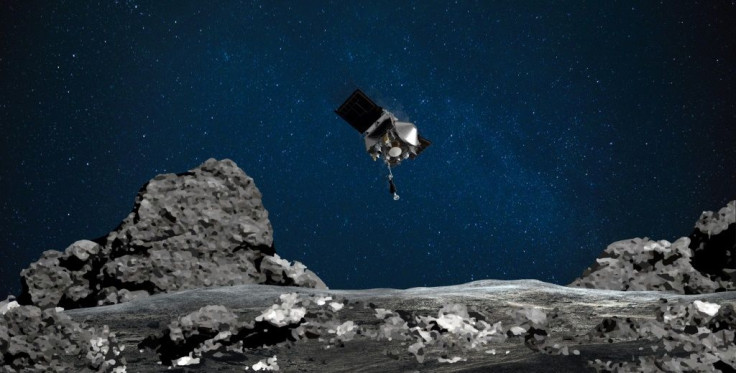2 Colossal 'Potentially Hazardous' Asteroids Will Cross Earth's Orbit Monday
KEY POINTS
- NASA's CNEOS is monitoring two giant asteroids that will be skimming past Earth this Monday
- Asteroids 2020 TB12 and 2016 CL136 are estimated to be above 780 feet in diameter, making them larger than the Golden Gate Bridge
- The two space rocks have not been included in the European Space Agency's Risk List
NASA'S Center for Near-Earth Object Studies (CNEOS) is keeping a close eye on two asteroids set to pass by Earth this Monday. The two space rocks, identified as 2020 TB12 and 2016 CL136, are both estimated to be no smaller than the Golden Gate Bridge in San Francisco, California.
The first asteroid that will enter Earth's vicinity is 2020 TB12, which will zip by the planet at a speed of 20,000 miles per hour at around 1:50 a.m. EST on Monday, according to the CNEOS' Close-Approach data table.
This near-Earth asteroid (NEA) boasts a diameter of 787 feet (240 meters), which makes it taller than the highest point of the Golden Gate Bridge, per The Measure of Things. But 2020 TB12 will still be smaller than the Eiffel Tower in Paris, which measures 1,063 feet (324 meters) to its tip.
Hours later, asteroid 2016 CL136 will make its close approach to Earth at 6:26 p.m. EST, hurtling across space at an average speed of 40,000 miles per hour.
The second space rock is even larger than 2020 TB12, measuring about 1,017 feet (310 meters) across, according to CNEOS. An asteroid of this size would be nearly as large as the Empire State Building in New York which stands at 1,250 feet (381 meters).
The two NEAs are fortunately not on the European Space Agency's Risk List, meaning they are not expected to pose a threat during their upcoming flyby. According to NASA, space rocks of their size would be able to cause damage should they manage to hit Earth.
However, the two asteroids are considered "potentially hazardous," which refers to a near-Earth object larger than approximately 500 feet (140 meters) whose orbit brings it within 4.7 million miles (7.5 million kilometers) of Earth’s orbit, according to NASA.
Asteroid 2020 TB12 will pass by Earth at a distance of 1.6 million miles away from its surface, while the closest 2016 CL136 will get to the planet during its upcoming flyby is 3.2 million miles, per CNEOS.
The CNEOS is responsible for computing high-precision orbits of near-Earth objects (NEOs) that enter the planet's neighborhood. Calculations of orbital parameters, close approaches, impact risks and discovery statistics are also computed and made available on the website to serve as public information.
"In the event of a predicted impact such as for 2008 TC3, CNEOS predicts the impact time, location and geometry," CNEOS says on its website. "Hypothetical impact scenarios are developed for use at the Planetary Defense Conferences and similar exercises at other meetings. In collaboration with the Aerospace Corp., CNEOS provides the NEO Deflection App, which computes how far a hypothetical asteroid would move if deflected by a known amount at an earlier time."

© Copyright IBTimes 2025. All rights reserved.





















